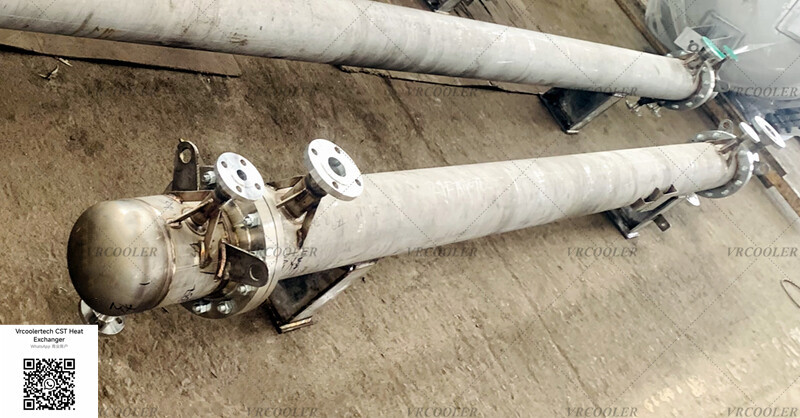Shell-and-tube Evaporator (Water/Freon)
The primary function is to transfer heat from the water (the substance being cooled) to the refrigerant (Freon, or more accurately, a modern HFC/HFO refrigerant like R-134a, R-513A, etc.), causing the refrigerant to boil and evaporate.
Input: Warm water enters, liquid refrigerant enters.
Output: Chilled water leaves, cold refrigerant vapor leaves.

The most common configuration for a Water/Freon evaporator is the Direct Expansion (DX) or "Dry Type" evaporator.
In this design:
Refrigerant (Freon) is in the Tubes.
Water is in the Shell.
Here’s a step-by-step breakdown of how it works:
1. Refrigerant Side (Inside the Tubes)
Entry: A mixture of low-pressure, low-temperature liquid and vapor Freon enters the tubes after passing through an expansion valve. The expansion valve creates a pressure drop, cooling the refrigerant significantly.
Heat Absorption: As the cold refrigerant flows through the tubes, it absorbs heat from the warmer water on the shell side.
Evaporation: This heat absorption causes the liquid Freon to boil and evaporate completely. The goal is to have superheated vapor (vapor heated above its boiling point) at the tube outlet to ensure no liquid enters the compressor.
Exit: The now warm, low-pressure superheated vapor exits the tubes and is drawn into the compressor to start the cycle again.
2. Water Side (On the Shell Side)
Entry: Warm return water from the building's air handling units or process system enters the shell through an inlet nozzle.
Flow: The water is directed by baffles inside the shell. These baffles force the water to flow back and forth across the tube bundle, maximizing turbulence and heat transfer. They also support the tubes against vibration.
Heat Rejection: The water gives up its heat to the colder refrigerant inside the tubes.
Exit: The now chilled water (typically cooled to around 6-7°C) collects at the bottom of the shell and exits through an outlet nozzle, ready to be pumped back to the cooling load.
Advantages of this Design (Freon in Tubes, Water in Shell)
Easy Maintenance: The water side (shell) can be easily cleaned by removing the end caps to deal with scaling or fouling, which is more common with water than with refrigerant.
Good Refrigerant Charge Control: It's easier to ensure proper refrigerant flow and oil return to the compressor when the refrigerant is confined to the tubes.
Withstands Water Pressure: The shell is a single, robust pressure vessel designed to handle the system water pressure, which can be high in tall buildings.
Efficient Heat Transfer: The baffle design creates high water-side turbulence, leading to excellent heat transfer coefficients.

